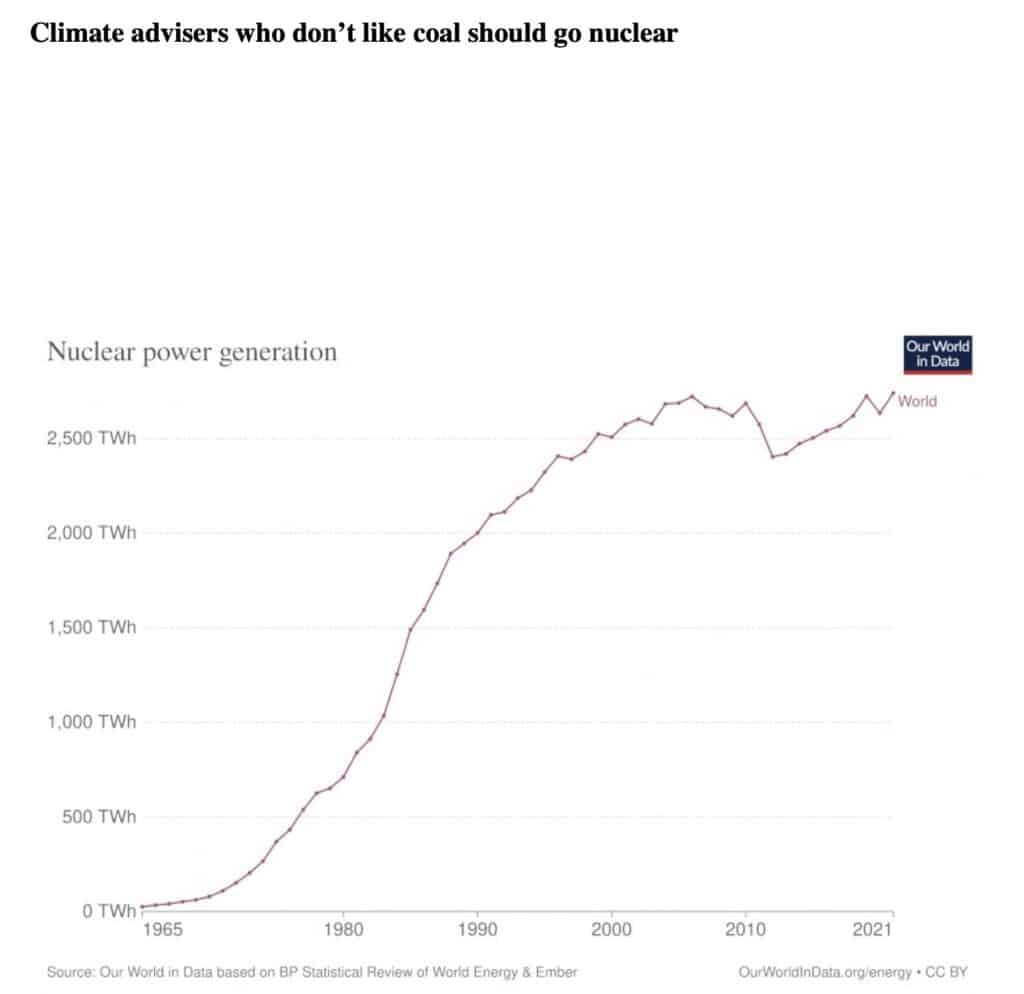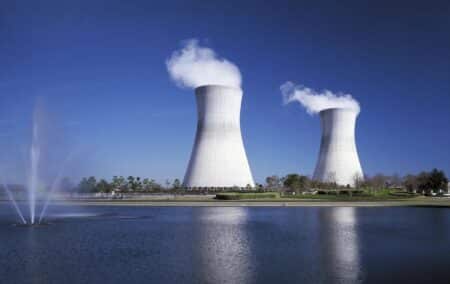The Presidential Climate Commission doesn’t like the plan to delay the shuttering of coal-fired power plants, but wants Eskom to extend the grid for renewables, instead. Right problem, wrong solution.
The Presidential Climate Commission (PCC) was established in 2020 by President Cyril Ramaphosa to advise him on matters pertaining to climate change.
Supposedly ‘independent’, it is a large body, comprising Ramaphosa as chair, Valli Moosa as deputy chair, ten different cabinet ministers and 23 commissioners who meet quarterly as well as in more frequent working groups, plus a full-time secretariat employing another 16 people. It sounds like an expensive affair.
It has come out swinging against Cabinet’s proposed plan to slow down the decommissioning of coal-fired power plants (defensible though that proposition is).
Instead, it is urging the government to build 50GW to 60GW of renewable energy by 2030. This objective is dependent on expanding and upgrading the electricity grid to add 8 500km worth of new high-voltage transmission lines.
Expanding the grid, said its executive director, Crispian Olver, should be government’s overriding priority right now.
The PCC proposals are broadly in line with the Just Energy Transition – Investment Plan (JET-IP), which is the fancy name for the $8.5 billion bribe rich countries have offered South Africa to risk its economy in ways they would rather not do themselves.
Climate alarmism
Let’s put it bluntly. Climate change, which South Africa did not cause and is only a minor contributor to, should be the least of this country’s concerns. Its immediate priority shouldn’t be to expand the electricity grid, but to consistently energise the grid it already has.
In doing so, it should not be ideologically bound by Western environmentalists, who swear – as Olver does – that renewables are the ‘least cost and fastest’ solution, while wondering where the finance will come from for expanding the grid to enable Eskom to connect the 2 000 or more small, unreliable and far-flung renewable power projects that will be needed to produce 50GW of power.
The PCC says its ‘purpose is to oversee and facilitate a just and equitable transition towards a low-emissions and climate-resilient economy’.
Writers and readers of alarmist media may believe that the PCC’s purpose is legitimate. (‘The century of hell’, the media calls it, while denying they’re being alarmist.)
I’d agree that climate resilience is an important goal, and I dislike pollution as much as the next guy, but I disagree with the apocalyptic rhetoric of climate doomsayers.
Here’s a chart of the absolute number of people killed per decade by natural disasters. They’re telling us it’s bad and getting worse, but in fact, we’ve never had it so good. The biggest killer in the last few decades is earthquakes, which are not climate-related.

So I disagree that throwing trillions at renewable energy will improve either energy security, or the economy, or the climate.
Not the way to go
If the PCC aims to stimulate a low-emissions and climate-resilient economy, however, and they also want a humming economy fuelled by abundant, affordable energy, that grows rapidly, creates jobs and eliminates poverty – goals that we all share – then renewable energy is not the way to go.
Renewable energy comes with major unsolved problems. Toxic waste and resource intensity is one of them: solar panels in particular rely on expensive and often toxic materials that go straight to landfills not 20 years after construction. Nuclear power stations can last 80 years, at least.
Storage is another: to make renewable energy even remotely dispatchable (that is, available when it is needed rather than when it is convenient to generate) requires large-scale, grid-connected storage solutions. Batteries are not yet cost-effective, and bring their own resource and waste problems. Pumped storage is geographically very limited. Other schemes only exist in video animations.
And both solar and wind energy are blots on the landscape, ruining vast vistas to gather extremely diffuse sources of energy.
Germany, which is renowned for its turn towards renewable energy and its decision to decommission nuclear power stations, is having enormous problems with soaring electricity prices and is destablising not only its own grid, but grids all over Europe.
The country’s Federal Network Agency has publicly discussed the prospect of electricity rationing (i.e. load-shedding) to deal with wildly fluctuating renewable generation and overloads caused by eco-friendly heat pumps and electric vehicles.
And Germany is not alone. One market analyst, speaking even before the Russian invasion of Ukraine roiled energy markets, described Europe’s renewable energy transition as ‘management by chaos’.
Is this the model we want to follow? Or do we want to follow Finland, which just the other day connected a new nuclear power station to the grid, causing electricity prices to fall by a staggering 75%?
‘Unsung hero’
Nuclear energy is stepping up, taking its place in the spotlight as the ‘unsung hero’ of tackling climate change at the recent COP27 climate jamboree in Sharm El Sheikh, Egypt.
The UN, too, has openly stated that climate objectives cannot be achieved without nuclear power in the mix.
Old-fashioned public opinion issues with nuclear are melting away. Nuclear energy is demonstrably among the safest sources of energy on the planet. It is also the most reliable.
Nuclear waste is an entirely imaginary problem, not an engineering problem. Coal-fired power stations emit more radioactivity in the form of fly ash than a nuclear power plant, which emits only water vapour. Technology to re-use nuclear waste for producing energy has existed since the 1960s.
Advanced nuclear plant designs with passive safety features all but eliminate any remaining safety concerns.
Smaller, modern designs can be decoupled from large cooling water sources, to be deployed anywhere power is needed – that is, without having to build 8 500km of high-voltage grid connections.
The United States has made great strides in nuclear energy in 2022, and its Department of Energy released a report demonstrating that old coal-fired power plants could productively be converted to nuclear power stations. This would save between 15% and 35% compared to new nuclear builds, and increase nuclear capacity in the US from 95GW (or half of its emissions-free energy) to 250GW.
Now that is a model for South Africa to consider, if the PCC wants us to decommission coal-fired power stations.
Renaissance
After a massive slump, mostly attributed to misplaced hysteria over the Fukushima Daiichi plant meltdown of 2010 (which demonstrated the safety of nuclear power, not its dangers), the nuclear industry has been growing steadily for the last decade, and setting new annual electricity production records, again, since 2021.

Besides the US, nuclear power production has been rising, often sharply, in large countries like China, India, Russia, and Pakistan.
Everything is falling into place. The long-awaited nuclear renaissance is upon us. So says Quill Robinson, the vice president of government affairs at the American Conservation Coalition. So says Catherine Clifford, writing on clean energy for CNBC. So said Scott Weiser, writing for the Denver Gazette earlier this week.
The private sector stands ready to build nuclear reactors, both of the time-tested conventional variety, which enjoy superior economies of scale, and of modern, advanced designs, which are flexible and quick to deploy. This includes at least two South African small modular reactor designs.
If South Africa wants to be at the forefront of technology and develop a zero-emission electricity industry that is capable of sustaining a vibrant economy, the PCC should throw its not inconsiderable weight behind a nuclear renaissance in our own country.
That is how we can generate the abundant, reliable, affordable electricity needed to support large-scale re-industrialisation, a growing high-tech industry, a transition to electric vehicles, a new hydrogen industry – all those things which to date have been the pipe dreams of frustrated, embarrassed politicians like Cyril Ramaphosa.
It’s time we leap-frog all this flaky renewable nonsense and make a beeline for the clean, green, nuclear future that awaits.
The views of the writer are not necessarily the views of the Daily Friend or the IRR.
If you like what you have just read, support the Daily Friend.

